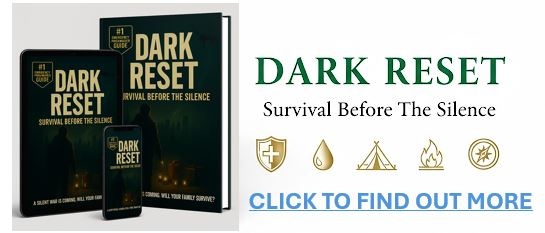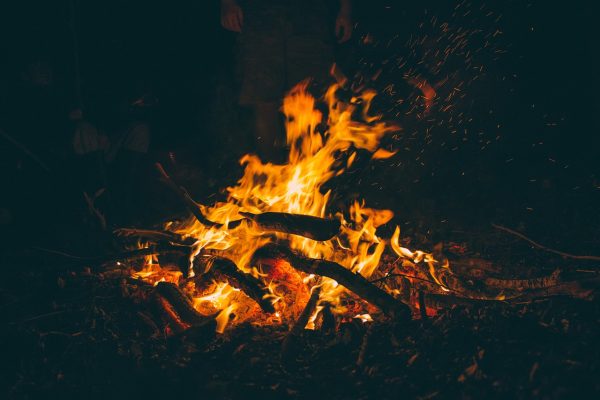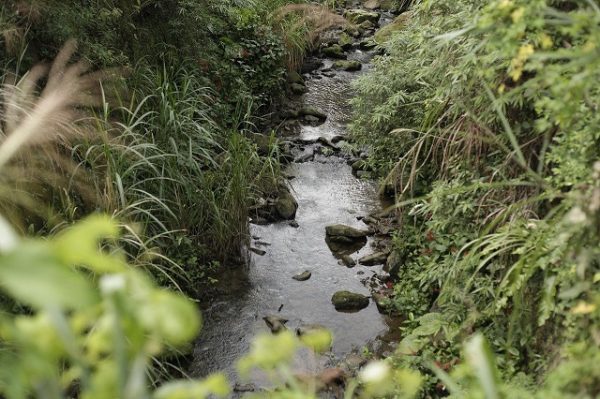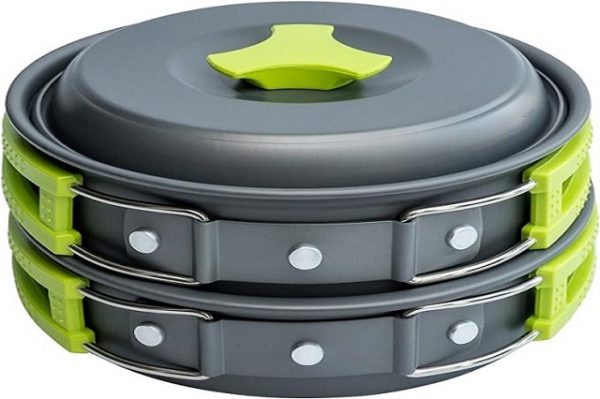The primal connection between man and fire remains strong. Whether for warmth, cooking, or simply enjoying the ambiance, the ability to build a fire is an essential skill for any adventurer. It adds a touch of wilderness to any experience and fosters a sense of connection with the natural world. This is a must read guide for any survivalist before they trek out into the wilderness.
Start With Wood Gathering
I always start by gathering the wood I need for the fire. Reason being is that generally by the time you make camp, it is already pretty late in the day. The sun will go down much faster than you think and walking around in the dark looking for firewood is not only a pain, but a huge safety hazard. To build a strong campfire, you’ll need three key components: tinder, kindling, and fuel wood. Look for dry wood that snaps easily when broken. Avoid green wood, as it burns poorly and produces a lot of smoke. While the fire can dry out slightly damp fuel wood, it’s generally best to use dry wood for the best fire.
- Tinder: Good tinder is essential for a successful campfire. Dry leaves, bark shavings, and dry grass are readily available options. However, carrying your own tinder, such as dryer lint or char cloth, is always a good idea, especially when conditions are wet. Remember, wet tinder will not ignite.
- Kindling: Kindling provides the bridge between tinder and larger fuel. Use small twigs and branches, about the thickness of a pencil. Ensure your kindling is dry, as damp wood will burn poorly. You can always use your knife to remove damp bark from otherwise dry sticks.
- Fuel Wood: Fuel wood provides the sustained heat for your fire. While large logs may seem impressive, they can be difficult to ignite. Opt for branches that are about the width of your wrist or forearm for easier burning. You can always place larger logs next to the fire after this step for a long slow burn.
It’s always better to have more than enough. Gather twice as much tinder, kindling, and fuel wood then you think you’ll need.
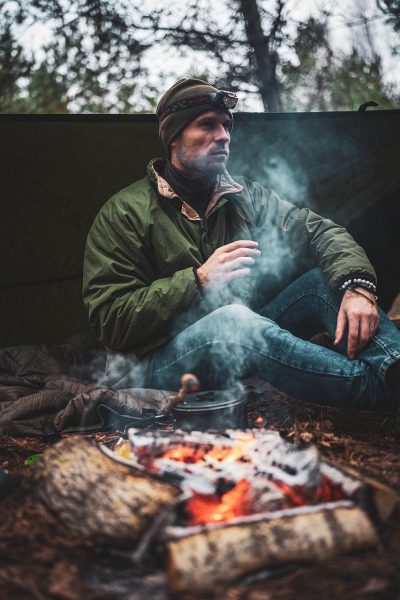
Prepare the Fire Bed
Before building a campfire, always assess the fire risk and choose a safe location. If camping in areas without designated fire rings, select a site away from flammable materials and be prepared to extinguish the fire completely before leaving. To prevent the spread of fire, select a fire site on bare mineral soil, well away from trees, bushes, and other flammable vegetation. Clear the area of any dry grass, leaves, and branches before building your fire.
For a more stable fire, construct a raised fire bed. Gather some dirt and pile it into a small platform in the center of the cleared area. This platform should be approximately 3-4 inches thick.
Build The Fire
Just like there’s more than one way to skin a cat, there are plenty of ways to build a quality fire. Everyone has their own method that they swear by that works 100% of the time, including myself. To avoid playing favourites, I’ll show you three different ways.
The Lean-to Fire
- Create a Support: Stick a long piece of kindling into the ground at a 30-degree angle, pointing into the wind.
- Build the Tinder Nest: Place a tinder bundle beneath the support stick.
- Add Kindling Layers: Place small pieces of kindling around the tinder nest, followed by larger pieces leaning against the support stick.
- Ignite the Fire: Carefully light the tinder and observe the fire grow.
The Tee Pee Fire
- Tinder Base: Place your tinder bundle in the center of the fire site.
- Kindling Teepee: Build a small teepee with kindling above the tinder, leaving an opening facing the wind for airflow.
- Build Up: Gradually increase the size of the kindling, working your way up to pencil-sized twigs.
- Fuel Wood Structure: Create a larger teepee structure around the kindling teepee using your fuel wood.
- Ignite: Place a match under the tinder. The flame should rise through the teepee structure, igniting the kindling and then the fuel wood.
- Maintain the Fire: Once the teepee structure collapses, add larger fuel logs to maintain the fire.
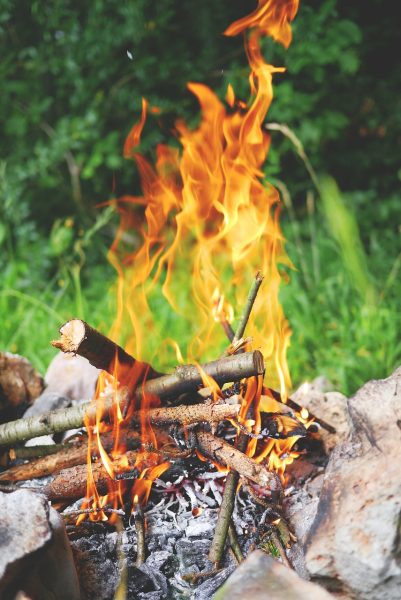
Log Cabin Fire
- Build a Kindling Teepee: Start with a small teepee of kindling.
- Add Fuel Wood Layers: Place larger logs on opposite sides, then layer smaller pieces across them, like building with Lincoln Logs.
- Create a Stable Structure: Continue adding layers of fuel wood to form a stable cabin-like shape.
- Ignite: Light the tinder and enjoy the fire.
Extinguish The Fire
It’s important to extinguish your fire completely to prevent wildfires. Follow these guidelines to ensure your fire is fully extinguished:
- When extinguishing the fire, sprinkle water gently over the embers and charcoal. Avoid pouring large amounts of water, which can flood the fire pit. Have a bucket of water readily available for fire safety.
- Stir the embers with a stick or shovel while sprinkling water. This ensures that all the ashes are thoroughly wet. Continue sprinkling until you no longer see steam or hear hissing sounds.
- Complete fire extinguishment takes time. Start the process at least 20 minutes before you plan to leave or go to bed to ensure the fire is completely out.
- To ensure complete extinguishment, gently place the back of your hand near the ashes. If you feel any heat, continue to add water and stir. The ashes should be completely cool to the touch before leaving.
- Leave no trace. Scoop up the ashes and scatter them thinly around the campsite to minimize impact on the environment.
- Be responsible and restore the site. If you created a fire bed, replace the dirt and sod to leave the area as you found it.

